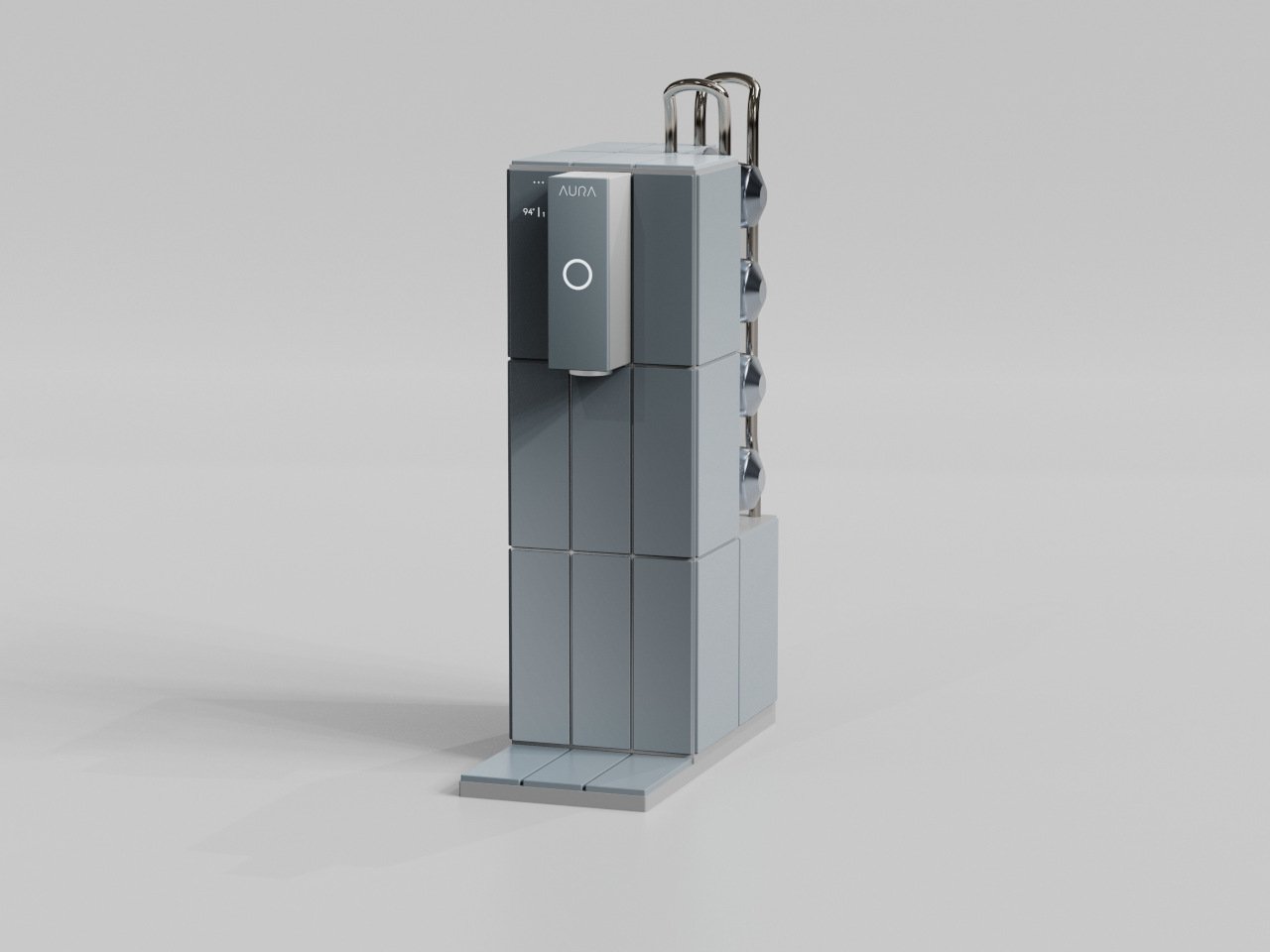Serial Salesman: Kailera CEO Ron Renaud has built and sold three biotechs, the last for $8.7 billion. “Companies get bought, they don’t get sold,” he says.
But the obesity market’s frenzy could make Kailera a prime acquisition target. Albie Colantonio for Forbes In the summer of 2023, Dr. Amir Zamani, a 42-year-old Johns Hopkins–trained physician who is a partner on Bain Capital’s life sciences team in Boston, was obsessed with obesity drugs.

Ozempic, the blockbuster injectable for type 2 diabetes from Novo Nordisk, was taking America by storm, on pace to generate some $14 billion in revenue that year for the Danish pharmaceutical giant. Eli Lilly was nearing FDA approval for its similar weight loss drug, Zepbound. Zamani eagerly wanted to find a competitor.
He’d been reading the early research for two years and spent months digging through reams of data from dozens of companies. Then he struck gold in an unexpected place: the portfolio of Jiangsu Hengrui Pharmaceuticals, one of China’s biggest pharmaceutical companies. Showcased in the early clinical data before him was a potential next-generation injectable weight loss therapy that, like Ozempic and Zepbound, targeted the blood sugar and appetite regulating hormone GLP-1.
“It was like, ‘Wait a second, they’re ahead of everybody else who’s not Novo or Lilly,’ ” he says. Results from Phase II clinical trials in China ultimately showed 59% of participants lost 20% or more of their body weight on an eight-milligram dose of the drug in 36 weeks, and side effects were mild. If those results hold, the drug could be especially useful for severely obese patients who need to lose more weight than they can on currently available medications.
Better yet, it was available to license. “We said, ‘Gosh, this looks like it’s really a best-in-class therapy,’ ” Zamani recalls, noting that the portfolio also included three other drugs, two of them more easily administered pills. “Then we got very serious.
” It used to be that Chinese drug development was largely about creating “me too” drugs for the local market. But over the past 10 years, with Beijing focused on building a native biotech industry, U.S.
-trained Chinese scientists returned home and started innovating instead of mimicking. A January report by Stifel analyst Tim Opler noted that nearly one-third of molecules sourced by major pharmaceutical companies through licensing deals are coming from China. American outfits have spent $8.
1 billion on upfront payments for Chinese drugs between 2020 and 2024, compared to $536 million in the preceding five years, according to biopharma deals database DealForma. While U.S.
regulations have cracked down on investment in Chinese companies, there are minimal restrictions on U.S. companies buying or licensing pharmaceutical assets created there.
“When new biology hits or new sets of targets become proven, then suddenly everyone who wants one of those just goes shopping in China,” says Jory Bell, a general partner at VC firm Playground Global. From HIV to GLP-1: John Milligan, Gilead’s former CEO and Kailera’s chairman, has been amazed by studies showing obesity drugs’ benefits beyond weight loss. “It shows how important metabolic health is to longevity,” he says.
John Milligan by Victor Blue Bloomberg Zamani wasted no time with the obesity drug, quickly partnering with Cambridge, Massachusetts–based VC shop Atlas Venture and New York’s RTW Investments. The three firms invested $400 million to spin up Kailera Therapeutics in October, launching with a license for the four Hengrui therapies and a plan to shepherd them to market. Having a ready-made portfolio of four drugs should allow Kailera to move fast in a space that has become extremely competitive since Ozempic became a household name.
Global sales of the category ballooned 50% last year, to $36 billion, and could more than triple again, to $131 billion, by 2028, according to Durham, North Carolina–based research firm Iqvia Institute for Human Data Science. To run Kailera, the investors hired an all-star: Ron Renaud, a 56-year-old former biotech stock analyst with a nearly unequaled track record of building biotech startups and then selling them for big profits. Over the past decade, Renaud has run and sold three companies—Idenix (focused on hepatitis C), Translate Bio (an mRNA therapeutics company) and Cerevel (centered on neurological diseases)—for a total of $16 billion.
“We have probably the most advanced, diverse, late-stage pipeline that is focused exclusively on weight management, outside of Big Pharma,” he says. By going to China, Kailera skipped years of research and lab work. Renaud now plans to move aggressively with Phase III clinical trials in the U.
S. for that first drug in hopes of bringing it to market by 2030 if not sooner. That might sound a long way off, but in the scheme of drug development and approval, it’s lightning-fast, thanks to Hengrui’s early work.
If all goes well, Kailera’s first drug should launch ahead of competitors that are now doing early- and mid-stage clinical trials. And the fact that Kailera’s licensing deal with Hengrui includes two drugs that can be taken orally is a potentially huge advantage in a market currently dominated by injectable drugs. Pills are such a big deal that Lilly had stockpiled some $550 million worth of its oral GLP-1 weight loss drug orforglipron at year end despite not having FDA approval.
Pills, after all, are not only less intimidating for patients but also cost far less to produce and distribute. Some 40% of American adults are obese. That means there is currently a pool of more than 100 million people who could qualify medically for one of Kailera’s therapeutics.
And that, Renaud says, is before you account for a rising obesity rate, the global market beyond the States or the potential for these drugs to treat related conditions, including cardiovascular disease and even some cancers. “That is an incredible market opportunity,” he says. “That’s not going to be addressed by a single drug, or two, or three.
” By John Buckingham Zimmer Biomet, which specializes in orthopedic implants for hips, knees, feet, ankles, shoulders and other surgical implants, has been facing investor concerns about the potential impact of GLP-1 drugs (such as Ozempic), which have the potential to make a dent in global obesity rates. The thought is that lower body mass indexes could result in fewer joint-related surgeries. ZBH CEO Ivan Tornos claims the opposite is true.
Lower rates of obesity will actually be a boost for Zimmer considering that damaged cartilage, osteoarthritis and other joint issues are typically irreversible, and thinner people will want to be more mobile. ZBH should be trading for more than its current forward P/E ratio of 14, given healthy bottom-line growth expected for the foreseeable future and a historic average P/E in the mid-20s. John Buckingham is a portfolio manager and editor of The PrudentSpeculator “I don’t know how you make decisions about medicines unless you understand things at the low level, and Ron was that person—he always understood his business down to the low level,” says John Milligan, the former CEO of Gilead Sciences, who is now Kailera’s chairman.
(The two first met in the early 2000s when Milligan was Gilead’s CFO and Renaud was a biotech analyst who refused to put a “buy” on the then-high-flying stock.) For Kailera, the next step is getting its first drug ready to go through FDA approval while building out research and manufacturing in the U.S.
Large-scale clinical trials like those required for weight loss drugs cost a fortune, and Kailera will need to raise funds, almost certainly hundreds of millions, to cover the expense. While Renaud won’t talk about what the company might be worth, PitchBook says it was valued at $595 million at its initial funding. Early-stage publicly traded obesity biotechs Metsera and Viking Therapeutics sport market caps in the $3 billion range.
In October, Renaud hired Scott Wasserman, who served as Amgen’s first cardiologist and built its cardiovascular and metabolic portfolios, as its chief medical officer. Then, in January, he brought on one of the country’s top obesity drug marketers as his chief commercial officer: Jamie Coleman. Her prior gig? Repping Zepbound for Lilly.
Chairman Milligan figures the obesity field is far larger than those of HIV and hepatitis C when he was leading Gilead, which had a recent market cap of $133 billion. “We can build a substantial company if we can raise enough capital and fend off acquisitions, which is hard to do in this industry,” he says. If it can’t, Kailera may go the way of Renaud’s previous efforts and wind up being sold to one of the major pharmaceutical firms, adding a fourth notch to his belt and potentially billions of dollars more in upside.
.
Technology

This Pharma Company Is Betting Big On A Chinese Ozempic Rival

Kailera jumped the weight loss miracle-drug line by licensing four clinical-stage obesity therapies from China, which is quickly emerging as a powerhouse pharmaceutical R&D center.















